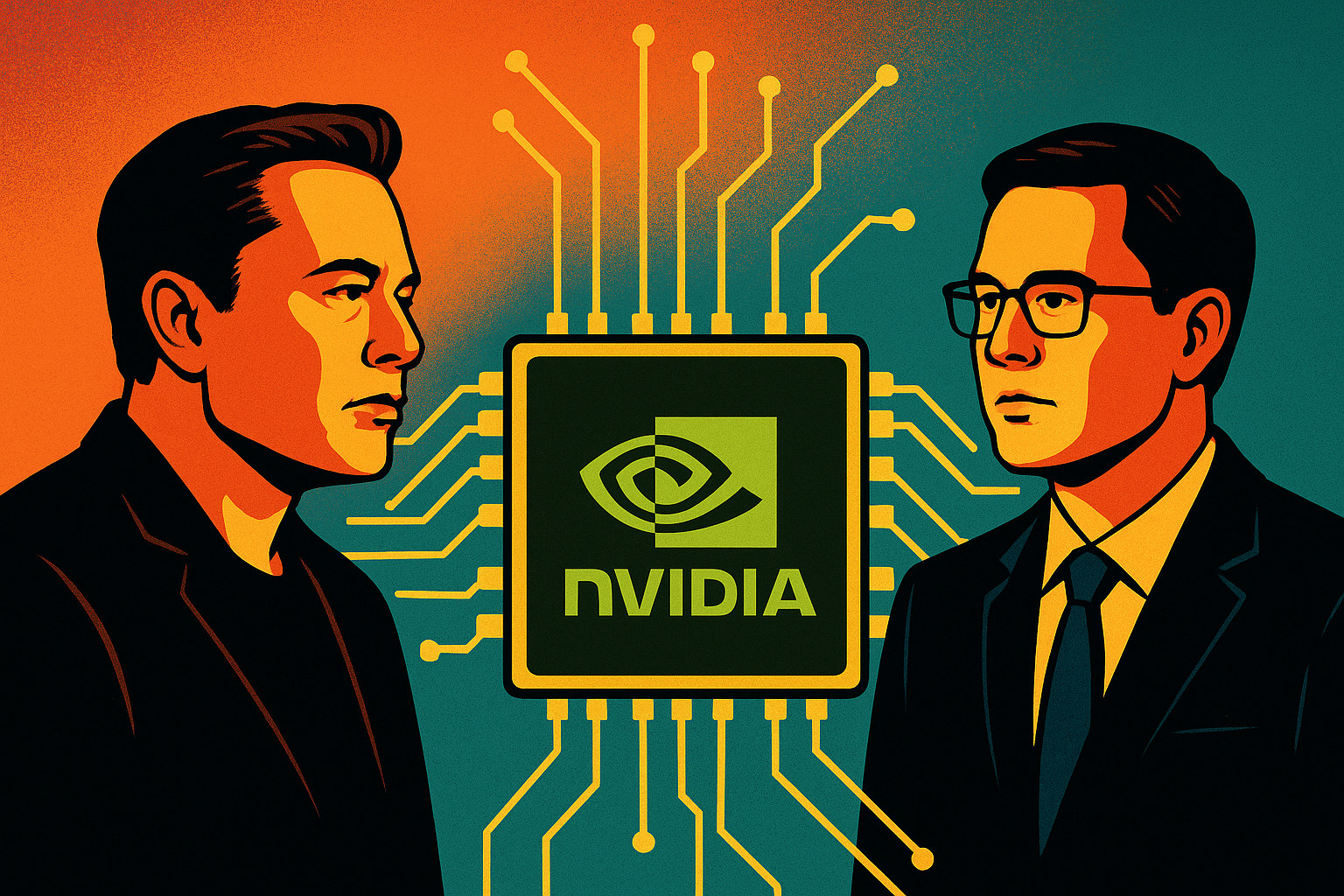The AI Funding Race Just Got a Major Jolt
The artificial intelligence (AI) investment landscape is heating up once again—this time with Elon Musk’s xAI reportedly closing in on a $20 billion capital raise, a blockbuster round that could reshape the competitive dynamics of the AI hardware market. According to Reuters, NVIDIA is expected to contribute around $2 billion to the deal, underscoring the strategic importance of GPUs in powering next-generation AI models.
This announcement comes amid an unprecedented global scramble for computing power. From data center expansion to model training, the demand for AI infrastructure has become the new oil rush of the 21st century—driving capital flows, shifting valuations, and redefining who controls the AI supply chain.
NVIDIA’s Strategic Bet: Hardware as the New Moat
For NVIDIA, the reported $2 billion commitment to xAI represents more than a financial investment—it’s a supply-chain partnership that could deepen its grip on the AI hardware ecosystem. As hyperscalers and AI startups compete for GPUs, NVIDIA’s hardware remains the backbone of almost every major AI training operation, from OpenAI’s GPT series to Google’s Gemini models.
Industry analysts suggest this move helps NVIDIA maintain a direct pipeline to high-value clients while locking in long-term hardware demand. “What NVIDIA is doing with xAI mirrors the vertically integrated model that made Tesla successful,” said one AI industry strategist quoted by Bloomberg Intelligence. “By aligning financing with GPU supply, NVIDIA effectively ensures its technology remains indispensable.”
The rumored deal also follows xAI’s efforts to scale its “Colossus 2” data center project, which Musk previously teased as being designed to rival the computational power of OpenAI’s infrastructure. With such ambitions, xAI’s GPU procurement strategy is not just about model training—it’s about infrastructure sovereignty in the AI arms race.
Why This Matters for Investors
The xAI–NVIDIA partnership exemplifies a growing trend in AI hardware–software integration, where companies are no longer competing on algorithms alone but on access to compute and capital. According to McKinsey’s 2025 AI Investment Outlook, global spending on AI infrastructure is projected to exceed $400 billion annually by 2026, with 70% of that directed toward hardware, energy, and data center expansion.
For investors, this convergence opens two major avenues of opportunity:
- Upstream hardware suppliers (e.g., NVIDIA, AMD, and TSMC) that benefit from demand surges for GPUs and semiconductor fabrication.
- AI infrastructure developers building proprietary data centers or partnering with chip providers to secure computing independence—companies like xAI, Anthropic, and CoreWeave.
Moreover, the strategic narrative behind xAI’s raise—bridging finance, hardware, and AI model training—signals where venture capital and institutional flows may concentrate next.
Future Trends to Watch
- Vertical Integration Becomes the New Standard:
The xAI–NVIDIA model could set a precedent where AI firms bundle financing, hardware, and model development into unified ecosystems. This trend could reshape how startups approach funding—less equity dilution, more strategic alignment. - GPU Supply Constraints Drive Valuation Premiums:
As GPU shortages persist, hardware access may become a determining factor in valuation. Investors should anticipate rising premiums for companies that can secure long-term chip contracts or develop alternative architectures. - Rise of AI Sovereignty:
Just as the EU recently pledged €1.1 billion toward its “Apply AI” program to reduce dependence on U.S. and Chinese tech, private companies are mirroring this pursuit of autonomy. Musk’s xAI ambitions fit squarely within this geopolitical trend of AI self-sufficiency. - Energy as the Hidden Multiplier:
Behind every AI data center lies an energy equation. The race for GPUs is increasingly tied to the availability of cheap, sustainable energy—suggesting potential upside for investors in clean energy and power infrastructure sectors supporting AI expansion.
Key Investment Insight
For investors, the xAI capital raise highlights a critical shift: the next wave of AI growth will be defined by capital intensity, compute control, and ecosystem integration. NVIDIA’s participation underscores its position not just as a chipmaker, but as the gatekeeper of AI’s industrial backbone.
Short-term, expect increased volatility in semiconductor equities as markets digest the implications of this funding round. Long-term, the winners will likely be firms that can vertically align AI models, data infrastructure, and hardware procurement—creating defensible moats that are difficult to replicate.
Stay Ahead with MoneyNews.Today
As the global AI race accelerates, keeping pace with these capital movements and strategic alliances is essential for investors seeking alpha in tech-driven markets. Stay tuned with MoneyNews.Today for daily coverage that connects market intelligence, policy shifts, and investment opportunities shaping the next decade of innovation.





